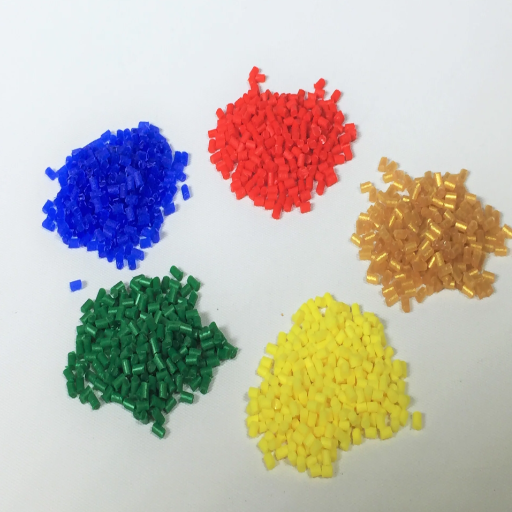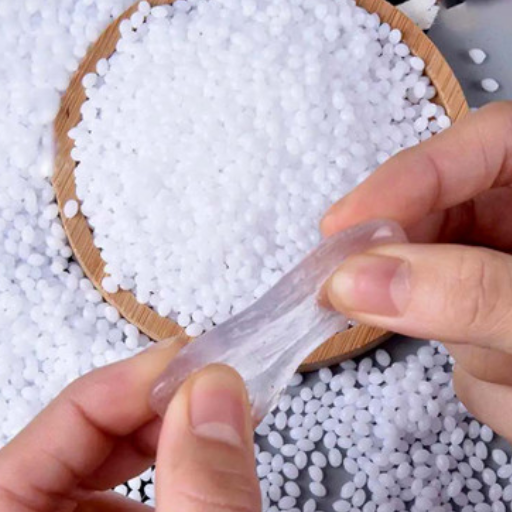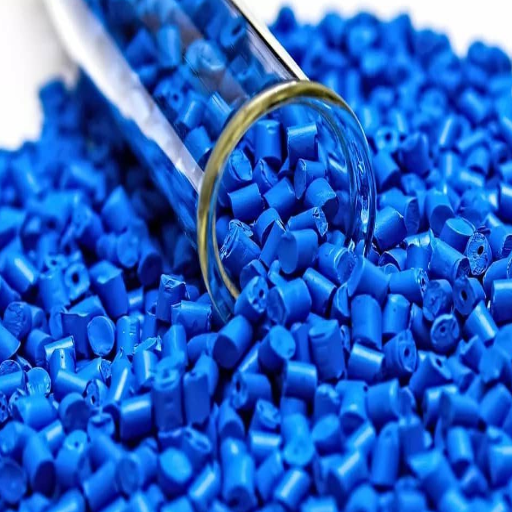Thermoplastic elastomers (TPEs) and conventional rubber are materials used in similar industries, but they have different distinct properties, and their processing characteristics set them apart. Given these differences, one can imagine the potential gains for sectors that must optimize their products’ performance, durability, and efficiency. In this article, we focus on comparing TPE and rubber, discussing the material, method of manufacture, physical properties, and application of TPEs, which are the significant structural aspects. A deeper understanding of these factors comparing TPEs to rubber informs how strongly the two correlate, which helps determine how best to use the materials across diverse applications.
What is TPE, and how does it differ from rubber?
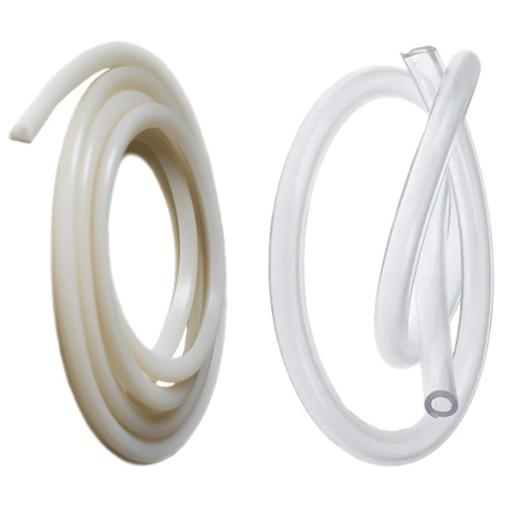
For instance, while TPEs are physically crosslinked polymers with elastic rubber properties and similar processabilities to ordinary plastics, such materials can be melted down, remolded, and reused. In contrast, traditional rubbers are chemically crosslinked and tend to thermoset. This difference in structure makes TPEs highly amenable to processing and enhances the overall sustainability of such materials. TPEs, on the other hand, will also not match the heat and mechanical endurance that rubber will; hence, for applications requiring long-lasting mechanical characteristics under high temperatures, grass TPEs will be generally inferior. TPEs have the upper hand in applications where manufacturability and flexibility are key considerations, whereas rubber is ideal for thermal stability and longevity.
What are the key properties of TPE?
Thermoplastic elastomers (TPE) are broad polymers with rubber-like elasticity and thermoplasticity. They are characterized by flexibility, excellent impact resistance, and the ability to maintain repeated bending or stretching in their original shape. Moreover, TPEs are lightweight, soft-touch materials with excellent chemical resistance to oils and solvents. Processing techniques such as injection molding, extrusion, and recycling make them cost-effective in various uses.
How does TPE compare to traditional rubber?
TPE provides many benefits in terms of conventional rubber. Manufacturing using TPE, though, requires more flexibility, and both types are durable. Still, TPE is superior due to its thermoplastic elastomer route, which allows it to be injection molded, also making the material easier to recycle. At the same time, TPE is thermoplastic, which can do away with this stage, thus saving time and money, while vulcanized rubber does not. TPE is also more widely usable in applications because it is more resistant to chemicals, oils, and solvents. Moreover, its soft and lightweight components allow for a new design paradigm far more conducive than traditional rubber’s heavier and less flexible attributes.
Is TPE considered plastic or rubber?
Thermoplastic elastomers (TPE) can be regarded as materials with the characteristics of both plastics and rubbers. In the structure of TPE, it can be seen that it has the elasticity and flexibility of a rubber while, at the same time, it has the characteristic of being plastic in that it can be melted, processed, and recycled. The contrasting functions of the material stem from its polymeric configuration, which has both complex thermoplastic and soft elastomeric parts. But thermoplastic characteristic tends to dominate. These enable the material to be such thermoplastic resins that can be melted and molded with heat, yet elastomeric characteristics abound, providing stretch- or rubber-like resilience. Hence, it is not surprising that TPE does not fall into either the pure category of plastic or rubber, which is somewhat more logical because TPE is a unique category.
What are the advantages of using TPE over rubber?
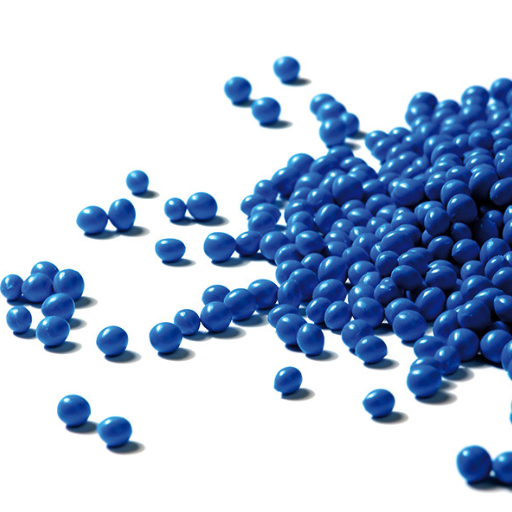
Thermoplastic elastomers (TPE)’s market appeal is improving over conventional rubber as TPE’s characteristics suit them better. In practice, TPEs possess high recycling potential because heating can change their shapes and remove waste during remolding, thus saving materials. Of great importance, too, is the fact that TPEs are said to increase the design potential since more complex shapes and features of the products can be easily made. The durability of the TPE products is improved as TPEs also have good resistance to various environmental items, including UV and chemical weather. Lastly, their lower weight and hardness gradability make them suitable for wide applications, such as automotive and consumer goods.
How does the recyclability of TPE compare to rubber?
Because TPE is a thermoplastic material, it is easy to recycle and rework many times because it can be remolded or reprocessed. Unlike vulcanized rubber, which is easily shredded, melted, and reshaped into new products, TPE, a thermoplastic elastomer, does not undergo irreversible curing like rubber or vulcanization and can easily be sliced, frozen, and transformed into entirely new products. Compared to conventional rubber materials, this decreases waste and aligns with sustainability objectives, making TPE a more eco-friendly alternative.
What are the cost benefits of TPE?
There are numerous potential material advantages, including cost advantages, that thermoplastic elastomer TPE can offer for so many industries. To begin with, the ability to recycle TPE reduces material wastage, reducing overall raw material expenses over time. TPE requires less cross-linking and curing, reducing the time and cost expenditure when manufacturing, making TPE a cheap material that is easy to work with. Moreover, investment assembly simplifies multiple material requirements when producing TPE, eliminating secondary operations or parts. All these give a good cost-return relationship without compromising the performance and durability of the product.
How does TPE perform in terms of elasticity and durability?
TPE provides high effectiveness when compared to elasticity and durability. Due to its outstanding structure of molecules, TPE can stretch substantially under stress and return to its original relaxed position after the cessation of stress, thus giving it greater flexibility. In addition, TPE also has good resistance against wear and tear, temperature changes, and UV radiation. Therefore, these features provide an assurance of quality performance over time in many different fields, thus making TPE reliable and versatile.
What are the typical applications of TPE?
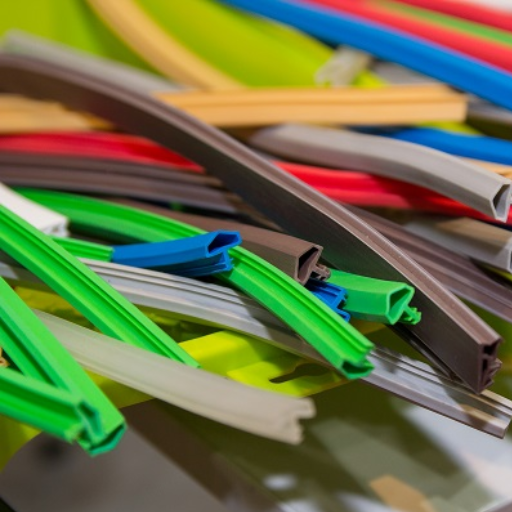
The many industries that TPE serves are all linked by TPE’s multifunctional attributes. Thanks to its elasticity and robustness in the automotive industry, it is frequently used to manufacture seals, gaskets, and interior parts. TPE also plays a vital role in the medical field, in applications such as tubing, syringes, and grip parts, in which biocompatibility and sterilization convenience are required. In addition to items like soft touch grips, shoes, and easily deformed household goods, TPE was also used for consumer items. It is also applied in electronics for insulating wires and connectors and in construction for weatherproof sealants and coatings.
How is TPE used in the automotive industry?
TPE’s flexibility, durability, and light weight make it critical to use in the automobile industry. To enhance vehicle insulation, TPE is frequently used to produce seals, gaskets, and weatherstrips to prevent air, water, and dust ingress. Moreover, due to its vibration-dampening qualities, TPE is suitable for use separately or within armrests, cup holders, and dashboard components to enhance performance. Apart from that, TPE is also used for insulating cables and air ducts since it can withstand heat and chemicals. Moreover, TPE can be used in exterior elements such as bumper systems and trim. Automakers consider TPE suitable as a founder as it is light- and impact-resistant, which furthers light sustainability efforts.
What are the benefits of TPE in consumer products?
Due to its outstanding combination of flexibility, durability, and sustainability, TPE gives manufacturers an edge in the consumer product market. Since it is soft to the touch, TPE can still be used even with ergonomic grips or constrained with durable wearables. One of its notable characteristics is its capability to be recycled and its ease of molding; thus, it becomes cost-effective and environmentally friendly, making the material great for everyday use.
Can TPE be used for 3D printing?
TPE can be considered for 3D printing due to its elastic and flexible structure. Nevertheless, some aspects have to be taken into account. FDM (Fused Deposition Modeling) printers, which can print with flexible filaments, are generally compatible. However, successful printers often hinge on the printer itself. An example would be a direct drive extruder mounted on the device. TPE filaments are immensely useful as they assist in making flexible and firm models, which in turn can be used to produce gaskets, seals, and ergonomic parts. However, they have limitations, given how your results may vary based on the print settings used, such as temperature and the print speed due to the material’s elastomer properties.
How is TPE processed compared to rubber?
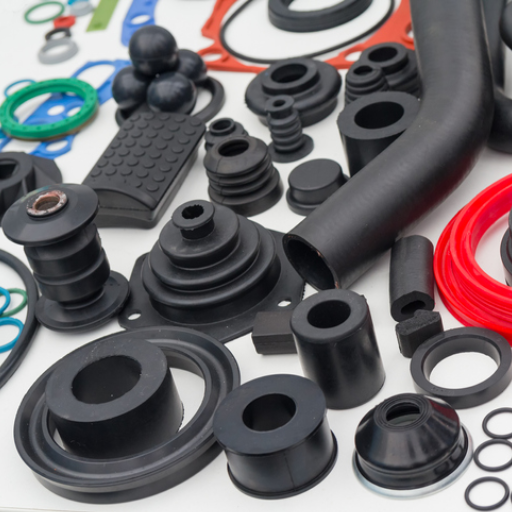
TPE, otherwise known as thermoplastic elastomer, is a cost-effective thermoplastic with several manufacturing options. TPE, on the other hand, can easily be injection molded, extruded, or 3D printed. Rubber is chemically altered and treated through vulcanization, making it a longer manufacturing process. TPE offers several manufacturing options instead of rubber, which is a much more tricky item to process as TPE can retain most of its elastic properties even after being melted and restructured multiple times.
What are the injection molding capabilities of TPE?
Thermoplastic elastomers are a good fit for injection molding because of several characteristics, such as easy flow upon heating and the ability to retain shapes designed once the temperature is reduced. Apart from this, TPE materials can maintain their dimensions, thus making it possible to produce parts with intricate shapes plus small details consistently. Since TPE materials have short cycle times, this characteristic contributes to relatively quick increases in production efficiency, making them useful in bulk production. Moreover, TPEs enable multi-shot and overmolding processes, which help bond them with rigid plastic. TPEs are widely used in automobile parts, medical equipment, consumer items, and many other utilities, which require flexibility, long service life, and simple processing.
Can TPE be extruded like rubber?
TPE is similar to rubber because it can also be extruded. Because it is thermoplastic, it can be extruded using standard procedures to maintain its elasticity and efficiency, the same as rubber. TPE does not need to be cured as vulcanized rubber does, which results in lower cost and shorter production time. This versatility makes it an outstanding material for various profiles, tubes, and seals.
How does the molding process differ between TPE and rubber?
The characterization of TPE is quite different from that of rubber, primarily because of its thermoplastic characteristics. Hence, TPE materials can be molded and remolded in standard thermoplastic injection molding equipment without requiring the lengthy curing processes that rubber necessitates. Conversely, as a thermoset substance, the rubber must be sulfured as part of the molding process to ensure a proper cure, a fundamental deep-rooting polymerization activity. However, it also cures its elasticity, adding complexity and duration to the cycle. Furthermore, TPE materials can be remelted and reused, whereas rubber cannot be reused after curing. Hence, these features give TPE better production cycle time, lower power utilization, and better material recoverability than conventional rubber.
What are the different types of TPE materials available?
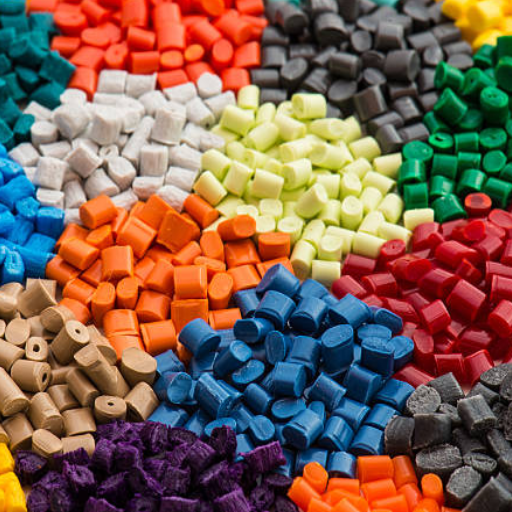
To begin with, several categories of TPE materials are designed for different applications according to their characteristics and performance. They comprise styrene block copolymers (TPE-S), which in most cases are flexible and are deployed in consumer goods because of their softness and flexibility; thermoplastic polyolefins (TPE-O), which are most appropriate for the automotive industry because they are tough and impact resistant; and thermoplastic vulcanizates (TPE-V) which are rubbery plastic that has good elasticity and weather resistance. Furthermore, there are copolyester elastomers (TPE-E), which are known for their high-temperature resilience; thermoplastic polyurethanes TPE-U which are helpful because of their abrasion resistance; and TPEs amphiphilic structures based on polyamide (TPE-A) which demonstrates high strength and chemical resistance. These classifications indicate the diversity and versatility of TPE materials in different sectors.
What is the difference between TPE and TPR?
Although often used interchangeably, TPE (Thermoplastic Elastomer) and TPR (Thermoplastic Rubber) differ. TPE is an umbrella term for polymers with rubber-like relationships and plastic materials. TPR, on the other hand, is a subcategory of TPEs as it mainly encompasses styrene compounds that are produced from SBS or SEBS. Although they serve similar purposes, TPR is more often used in consumer products since it is the softer and grippier of the two materials; TPE, on the other hand, is more industrialized since it is less affected by UV and chemical exposure and has a wider operational temperature window. Even if slight, these differences explain their functional differences across the categories.
How does TPE compare to silicone?
Thermoplastic elastomers (TPE) and silicone have some similarities regarding flexibility and durability, but they differ in some aspects. TPE is more thermoplastic. Thus, it is easier to process, which makes it more economically viable for mass production. Silicone, however, has better thermal resistance as it remains intact in temperatures higher than those that would cause TPE to deform. On top of that, silicone is also chemically more inert and, therefore, perfect for use in medical and food-grade products. On the other hand, TPE excels in its recyclability and vast design options, presenting a massive upside for industries that are more sustainable and flexible in designs.
What is thermoplastic polyurethane (TPU), and how does it relate to TPE?
Thermoplastic polyurethane (TPU) is a type of thermoplastic elastomer with distinct characteristics such as elongation and compression toughness, abrasion, oil, and chemical resistance. It is a multipurpose material featured among manufacturers in the automotive, footwear, medical devices, and electronics industries. TPE and TPU are both types of thermoplastic elastomers, which is one characteristic they share; however, TPU is better because it has good mechanical attributes, such as its tensile strength and wear resistance. Also, TPU does have a broad range of operation temperatures and is flexible enough for use in rugged applications that require rigid materials. Though both TPU and TPE serve almost the same logic, TPE tends to work best in high performance and extreme environments as it does come with some advantageous features.
How do I choose between TPE and rubber for my project?
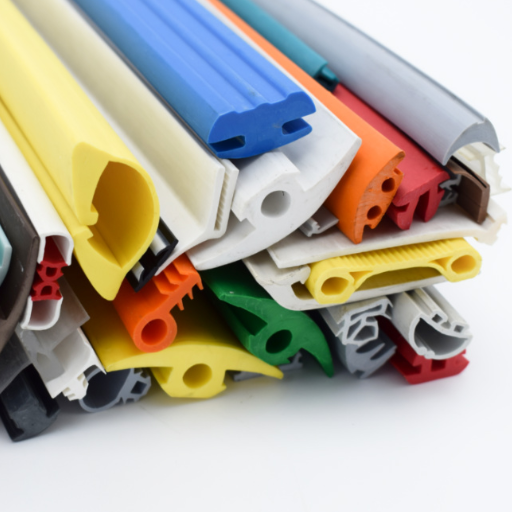
Let us consider TPE and rubber in the context of a project. As always, the details of the application will determine the project’s material. Let us take TPE as an example. It would suit projects requiring a low-mass design, low processing, and a recycle-friendly material. TPE is ideal for cases requiring flexibility, soft-touch surfaces, and advanced design. However, when the operating environment consists of extreme temperatures or exposure to abrasion and chemicals, TPE is usually not the right choice; natural or synthetic rubber such as NBR or EPDM would be ideal. Rubber is mainly well known for its durability and resilience in challenging or high operating conditions. Noting down environmental factors, mechanical restorations, and cost will assist the decision between TPE and rubber.
What factors should I consider when selecting TPE or rubber?
When comparing and deciding between TPE and rubber, I look into factors such as the operating environment, performance, and financial perspectives. A suitable example is TPE, where composition edges can easily be manipulated and fabricated; hence, it is ideal for low-mass and highly structured customizable projects. However, rubber would be more effective if a project needs to function under harsh conditions such as extremely high temperatures, humid environments, or chemical exposure. Also, I consider conformance with standard regulations, wear and aging resistance, and production costs, considering reusability and recycling opportunities.
How does the hardness of TPE compare to rubber?
Thermoplastic elastomers (TPEs) tend to differ from rubber in relative hardness depending on the formulation of the material in question. TPEs range from 20A to 85D on the Shore durometer scale, which means some are pretty soft and flexible while others are more rigid. Natural and synthetic rubbers, such as EPDM or nitrile rubber, generally possess a Shore hardness of between 20A and 90A, meaning they tend to be softer than TPE, which has a much broader range of hardness value. However, the grade of TPE or rubber and its intended application governs the precise comparison. Furthermore, TPE would also enable finer control over the hardness through blending and additives, providing it with an advantage in applications that demand specific mechanical performance.
What are the environmental considerations when choosing between TPE and rubber?
Switching from TPE to rubber or vice versa impacts the material’s performance and has environmental implications. TPE is more suitable for reprocessing because it is a thermoplastic that reduces waste. However, traditional rubber is derived from natural sources such as latex from rubber trees. However, rubbers generally have slow decomposition rates. In contrast, synthetic rubbers save time and are more readily available but are petroleum-based. Lastly, the decision should be guided by the environmental impact targets, methods used to produce, and the recyclability of the end product.
References
Frequently Asked Questions (FAQ)
Q: What is a thermoplastic elastomer (TPE)?
A: A thermoplastic elastomer, also known as thermoplastic rubber, is a copolymer or polymer blend that combines the properties of both thermoplastic and elastomeric materials. TPEs can be processed like thermoplastics but have elastomeric properties similar to rubber, making them versatile and recyclable.
Q: How do TPEs differ from traditional rubber?
A: The main difference is that TPEs are thermoplastic, meaning they can be melted and reformed, while traditional rubber is a thermoset material. TPEs are more easily processed and recyclable, while vulcanized rubber cannot be reprocessed once cured. TPEs offer a wider range of physical properties and can be more cost-effective in specific applications.
Q: What are the advantages of using TPEs over conventional rubber?
A: TPEs offer several advantages, including easier processing through extrusion, injection molding, or blow molding, recyclability, lower production costs, and the ability to create complex shapes. They also balance plastic and rubber properties, making them suitable for various applications where a soft, flexible material is needed.
Q: Are TPEs recyclable?
A: Yes, TPEs are recyclable. Unlike thermoset rubbers, thermoplastic elastomers can be melted and reformed multiple times without significantly degrading their properties. This makes them an environmentally friendly choice and allows for easier recycling and reuse of materials.
Q: What are some typical applications for TPEs?
A: TPEs are used in various applications, including automotive parts, consumer goods, medical devices, sporting goods, and industrial components. They are instrumental in products that require flexibility and durability, such as seals, gaskets, grips, and overmolded parts.
Q: How do I choose the right material between TPEs and rubber for my application?
A: Choosing the right material depends on various factors, including your application’s specific requirements, such as temperature resistance, chemical compatibility, durability, and cost. You should also consider the processing methods available, the desired physical properties, and the end-use environment. It’s often helpful to consult with material experts or contact us for guidance in selecting the most suitable material for your needs.
Q: Can TPEs replace synthetic rubber in all applications?
A: While TPEs can replace synthetic rubber in many applications, they may not be suitable for all. TPEs generally have lower heat resistance and different mechanical properties than high-performance rubbers. Traditional synthetic rubber may still be the preferred choice for applications requiring extreme temperature resistance or specific chemical compatibility. It’s essential to evaluate the exact requirements of each application to determine the most appropriate material.
Q: How do TPEs behave under stress compared to traditional rubber?
A: TPEs typically exhibit good elastomeric properties, allowing them to return to their original shape after deformation. However, their behavior under stress can differ from traditional rubber. TPEs may have lower tensile strength and tear resistance than high-performance rubbers. They also tend to have a lower maximum service temperature. The specific behavior depends on the TPE formulation, so reviewing your application’s material specifications is essential.

